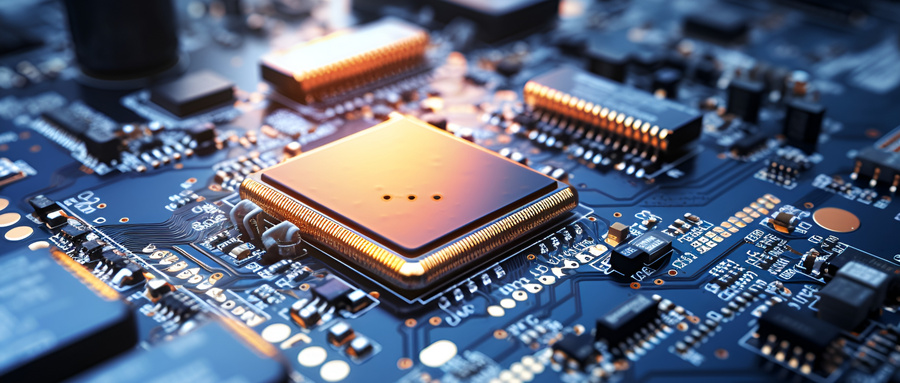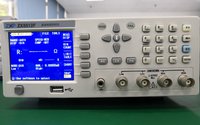New Changes in the Semiconductor Industry: Technological Iteration and Ecological Restructuring Reflected by TI's Price Adjustment
Date:2025-08-25 13:57:00 Views:3021
Recently, global analog chip giant Texas Instruments (TI) launched a price adjustment storm covering over 60000 part numbers, with price increases ranging from 10% to 30%. Among them, 41.3% of products saw a price increase of over 30%, far exceeding the price adjustment scale of only 3300 products in June of the same year, making it the largest single price increase event in the history of the semiconductor industry.

From the perspective of driving factors, cost pressure and geopolitics are important drivers behind this price increase. TI's gross profit margin in China has long been lower than the global average, coupled with rising costs of raw materials such as high-purity silicon wafers, prompting it to alleviate profit pressure through price adjustments. At the same time, the US "Chip Act" tariff policy on China has increased TI's US chip production costs by 34%, and the restructuring of the geopolitical supply chain has accelerated the implementation of its "profit guarantee" strategy. This price adjustment covers almost all customers except for super customers, demonstrating TI's cautious decision-making in balancing customer relationships and profit demand. In addition, this price increase objectively creates a domestic substitution window for domestic manufacturers. TI's old products, such as the 2018 DCDC converter, have increased their prices by 30%, while the substitute models have only been slightly adjusted by 5%. Domestic manufacturers such as Shengbang Co., Ltd. and Sireipu have a part number overlap of over 70% in the industrial control and automotive fields, and their price advantages are significant. For example, Shengbang's automotive grade chips are 20% -30% lower. With policy support, the process of domestic substitution will accelerate.
The recent price increase has had a profound and multifaceted impact on the electronic components industry. In terms of downstream cost transmission and supply chain reconstruction, the number of analog chips used in the automotive electronics field has reached 650. The 50% price increase of TI's automotive products has led to a 15% -20% increase in BMS and motor controller costs for car companies. Companies such as BYD and NIO are facing a dilemma of "cost digestion" or "terminal price increase". Some companies have already started diversifying their supply chains and introduced solutions such as Naxin Micro and Sirip. In the field of industrial control, the price of analog front-end chips for PLCs has increased by 28%, leading to delays in production plans for robot manufacturers. Small and medium-sized manufacturers are forced to increase their safety stock, resulting in a 10% -15% increase in cash flow and accelerating the transition to a "zero inventory" model. The price of fast charging ICs and RF front-end chips for mobile phones in the consumer electronics field has increased by 5% -15%, but the price war in the terminal market is fierce. Manufacturers such as Xiaomi may use domestically produced PMICs to hedge costs through optimized design.
In reshaping the competitive landscape and accelerating technological iteration, international giants such as ADI and Infineon may follow suit and adjust prices, especially in high-end fields such as high-precision ADCs and isolation chips, forming a "price alliance" to further squeeze the space of domestic manufacturers. Domestic manufacturers have broken through with the advantage of cost-effectiveness, with a consumer electronics substitution rate of over 45% for mid to low end markets such as Shengbang Shares and Siripu operational amplifiers, and a year-on-year increase of 45% in shipments in the first half of 2025; The high-end market nano chip micro car grade magnetic current sensor has passed ASIL-D certification, replacing Infineon's solution. Xinhai Technology's 24 bit industrial ADC accuracy benchmarks ADI, and the market share in the robotics field has increased to 8% -10%. At the same time, the proportion of domestic manufacturers' R&D expenses has increased from 15% in 2020 to 22% in 2025, approaching TI's 25%, and policy dividends are accelerating technological catch-up.
This incident has brought multiple inspirations to the industry. In the short term, downstream enterprises need to accelerate inventory turnover, adopt VMI mode, optimize supplier structure, BYD introduces domestic BMS chips, and through design optimization, such as using more efficient power architecture to reduce single-chip dependence. Distributors need to shift from being "price transmitters" to "supply chain service providers", utilizing digital tools such as the Weixiang Technology platform to achieve dynamic inventory management and avoid transaction risks caused by information lag. In terms of long-term strategy, technological innovation and global layout are key. Technological breakthroughs focus on cutting-edge fields such as third-generation semiconductors and integrated storage and computing. SiC devices improve the charging efficiency of electric vehicles by 30%, while TI's automotive grade SiC chips increase in price by 22%, providing alternative opportunities for domestic manufacturers; Both globalization and localization are emphasized, and research and development centers are established in Southeast Asia/Europe, such as the Schlieper Germany team, to avoid tariffs and enhance international competitiveness through the use of the "place of origin certification" rule. Building ecological advantages through policy and market synergy, policy support continues to promote the fourth phase investment of large funds, focusing on bottleneck areas such as analog chips and third-generation semiconductors, and establishing national innovation centers; The market mechanism guides the green transformation of enterprises through carbon emissions trading and circular economy policies, balancing costs and sustainable development goals.
Overall, TI's price surge is both a stress test and a catalyst for industrial upgrading. In the short term, downstream cost pressures and supply chain risks are intensifying; In the long run, it will drive the industry to shift from "price competition" to "technology+ecology" competition. Enterprises with high-end R&D capabilities and full industry chain synergy advantages, such as Shengbang Shares and Sireipu, are expected to stand out in domestic substitution and global restructuring, leading China's electronic components industry to new heights.




 Weixin Service
Weixin Service

 DouYin
DouYin
 KuaiShou
KuaiShou





















